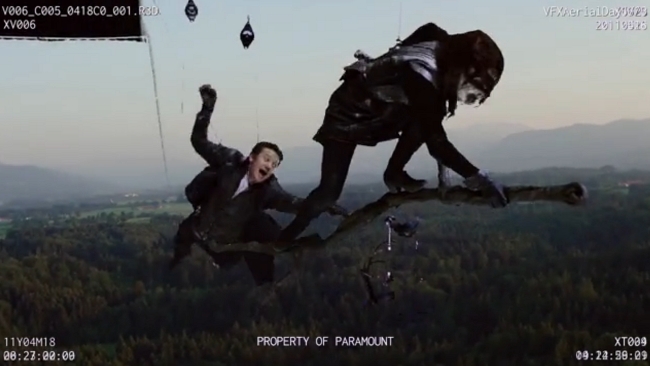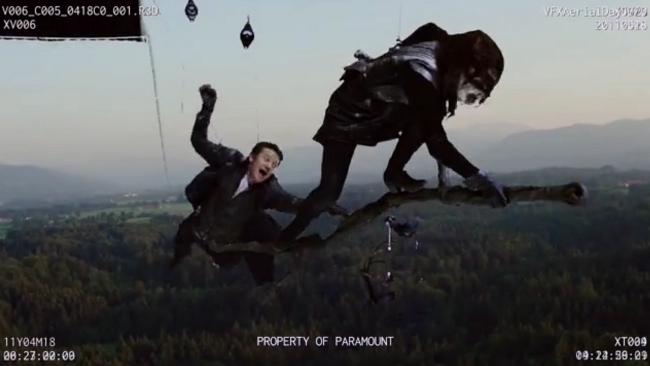

When Hollywood comes calling and asks you to accomplish a miracle, it’s time to step up. Just ask Richard Widgery and the visualization specialists at Take4D.
Everybody loves a ready-made solution or, to borrow from a popular ad campaign, an easy button. As creatives, it’s easy to take for granted all the work and brainpower it takes to come up with these time (and budget) savers, whether we’re talking about the latest chroma keyer, the next great camera stabilizer, or countless other ingenious gadgets and utilities that make our professional lives better. But what if it’s your job to make that easy button? And what if that magical solution must do what has never been done before?
A BIG ask
Well, if you’re Richard Widgery and his team at Take4D, you put on your thinking cap and roll up your sleeves. And it doesn’t hurt to cross your fingers. Take4D is a leading company in visualization tools and services, so they are up to most challenges, but a recent request tested their limits. Joe Lewis of General Lift, a company specializing in motion controlled VFX rigs, wondered, “could Take4D playback pre-recorded camera moves on a gyro stabilised helicopter camera flying at 100 mph, 20 feet above trees?” Did I mention this had never been done before? Oh, and Widgery’s team only had 5 days to make it happen, counting the weekend.
Widgery to the rescue
In Widgery’s own words: “In the feature film Hansel & Gretel - The Witch Hunters, there is a scene where the Witches are flying on broken tree branches with a character hanging off the end.
“The actors were suspended on a wire flying rig and General Lift recorded the Technocrane camera movements using their EncodaCam system. These action sequences were originally shot against green screen in Babelsberg Studios - Germany, where the green was replaced in real time on-set with an arbitrary CG rendering of a night time skyline of trees.
“The green screen was to be finally keyed against helicopter background plates shot over the Bavarian Alps, Germany, and the VFX Supervisor, Jon Farhat, wanted the backgrounds to match the camera work done in the studio.
“Helicopter Film Services were already signed up for the job as Aerial Cinematographers and were going to use a Nettmann Super-G gyro stabilised rig with a RED Mysterium-X camera. My task was to take the LA camera moves and find a way of playing them back on the Super-G.
“The Super-G was originally designed as a self contained system with its own joysticks and control panel with no external interfaces at all. Nettmann provided me with their own proprietary communications protocol so that their control interface could be removed and replaced with Take4D running on a laptop.”
More demanding than you imagine
It’s impossible to overstate the difficulty of this task. The Super-G control system provides zero feedback and only accepts voltage commands to direct drive the motors, so the corresponding EncodaCam data needed to be converted into real-time voltage signals to perform the necessary pan, tilt, and roll functions to match the green screen sequences. And they needed a reliable way for initial calibration and any on-the-fly corrections, because even small temperature changes would wreck the system’s accuracy. The usual interface of a Take4D laptop was too susceptible to the mid-air vibrations of helicopter flight, so they hacked an X-Box controller.
Ingenuity
A little ingenuity goes a long way. “The right thumb pad was used to pan and tilt the camera; the left was used for roll. The buttons were programmed with a variety of function to play the move forward or backwards, change the calibrations, compensate for drift, and emergency stop,” says Widgery. “Using just three key presses, the first camera move data was loaded into Take4D and converted ready for playback on the Super-G. This produced a ‘first positions’ numerical read-out for the required pan, tilt, and roll for the first frame of footage. The X-Box joystick controller was then used to drive the camera to match these values.” During the runs, Richard used the X-Box controller to compensate for wind, which had the force to move the camera and ruin every take.
23 day-for-night shots at magic hour later, and all the work was done. There was nothing left for Widgery and his team to do but wait months to find out if the plates matched the green screen sequences. And then the news arrived: the plates were exactly what was needed.
Easy is relative. And everything looks easier in the rearview mirror. So don’t spend too much time searching for an "easy" button, especially if you have the skills to make your own.
Tags: Technology



Comments